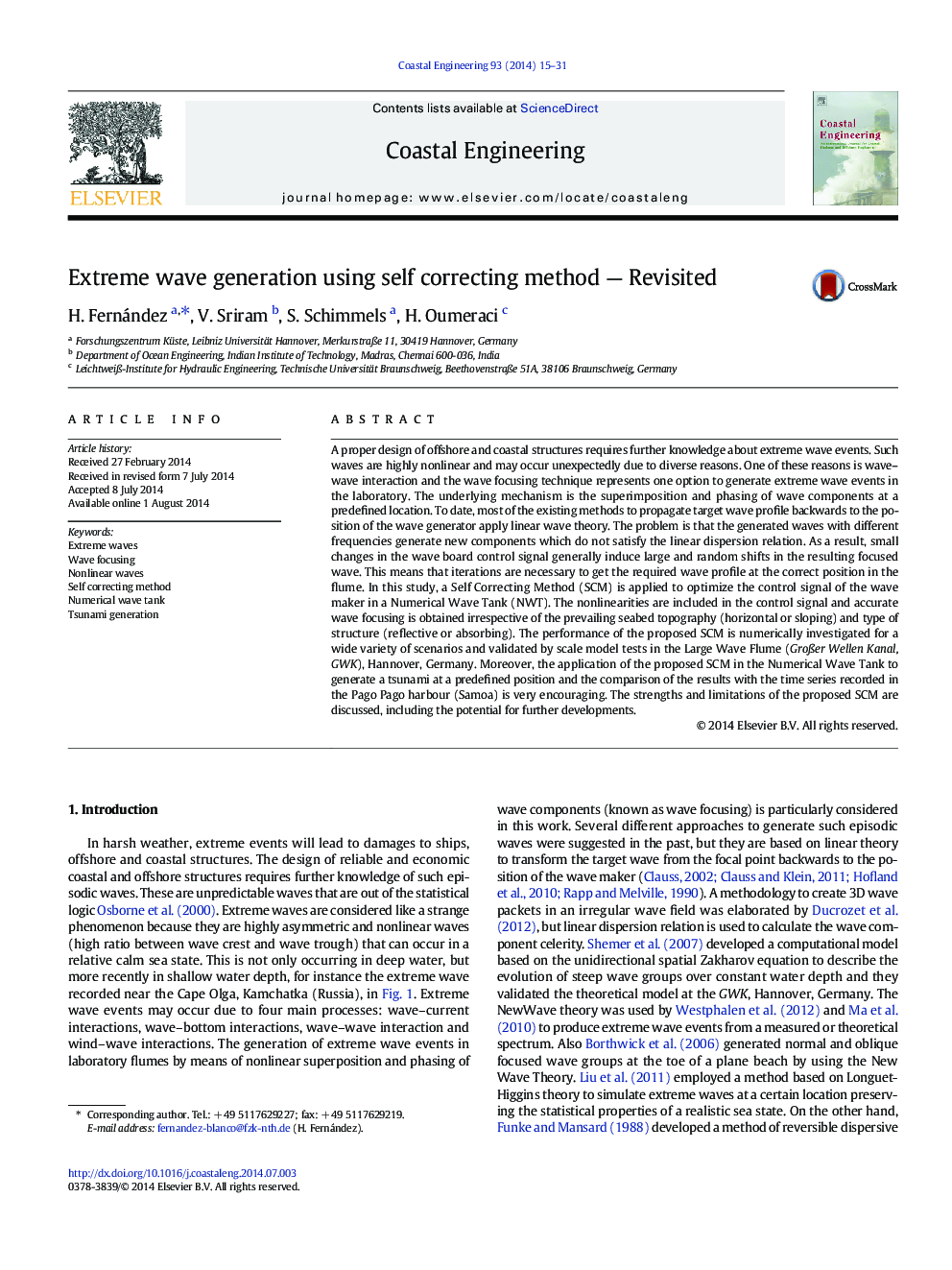| کد مقاله | کد نشریه | سال انتشار | مقاله انگلیسی | نسخه تمام متن |
|---|---|---|---|---|
| 1720690 | 1520361 | 2014 | 17 صفحه PDF | دانلود رایگان |
• Wave focusing represents one option to generate freak waves in the laboratory.
• A Self Correcting Method (SCM) is applied to generate focused waves.
• The SCM is tested and eventually validated in the GWK, Hannover, Germany.
• The SCM is successfully used to generate a tsunami time series.
A proper design of offshore and coastal structures requires further knowledge about extreme wave events. Such waves are highly nonlinear and may occur unexpectedly due to diverse reasons. One of these reasons is wave–wave interaction and the wave focusing technique represents one option to generate extreme wave events in the laboratory. The underlying mechanism is the superimposition and phasing of wave components at a predefined location. To date, most of the existing methods to propagate target wave profile backwards to the position of the wave generator apply linear wave theory. The problem is that the generated waves with different frequencies generate new components which do not satisfy the linear dispersion relation. As a result, small changes in the wave board control signal generally induce large and random shifts in the resulting focused wave. This means that iterations are necessary to get the required wave profile at the correct position in the flume. In this study, a Self Correcting Method (SCM) is applied to optimize the control signal of the wave maker in a Numerical Wave Tank (NWT). The nonlinearities are included in the control signal and accurate wave focusing is obtained irrespective of the prevailing seabed topography (horizontal or sloping) and type of structure (reflective or absorbing). The performance of the proposed SCM is numerically investigated for a wide variety of scenarios and validated by scale model tests in the Large Wave Flume (Großer Wellen Kanal, GWK), Hannover, Germany. Moreover, the application of the proposed SCM in the Numerical Wave Tank to generate a tsunami at a predefined position and the comparison of the results with the time series recorded in the Pago Pago harbour (Samoa) is very encouraging. The strengths and limitations of the proposed SCM are discussed, including the potential for further developments.
Journal: Coastal Engineering - Volume 93, November 2014, Pages 15–31
